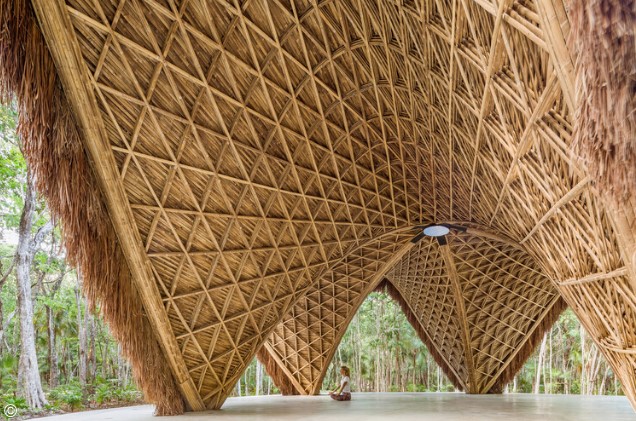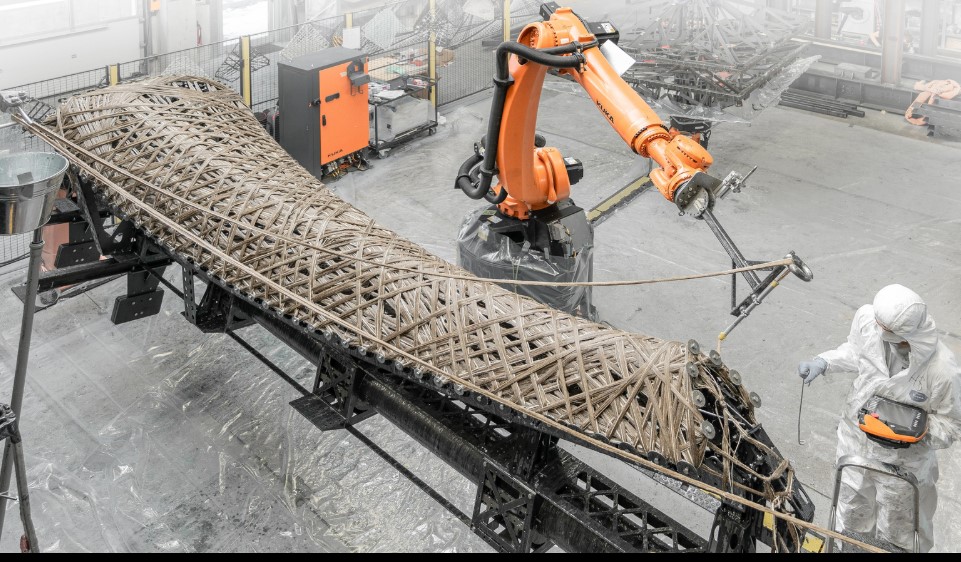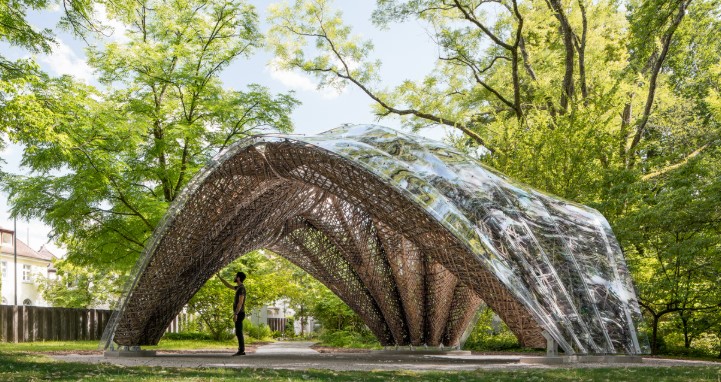How Ancestral Wisdom and Modern Algorithms Are Shaping Architecture’s Future

Merging Old and New: Redefining Architectural Intelligence
In architecture, artificial intelligence (AI) is no longer a sci-fi concept; rather, it is a tangible reality that is changing the way we design. A vast array of variables, including formal, programmatic, contextual, and regulatory ones, may be processed and evaluated by computational systems in a matter of seconds, directing architects toward highly efficient solutions.
However, a crucial question that comes up as we embrace this algorithmic revolution is whether architectural intelligence can be reduced to data-driven logic. Alternative strategies that emphasize methods of construction based on sensory experience, location adaptation, and knowledge transfer across generations are becoming more popular in response.
A richer knowledge emerges from the interaction between ancestral and artificial forms of intelligence.
However, a crucial question that comes up as we embrace this algorithmic revolution is whether architectural intelligence can be reduced to data-driven logic. Alternative strategies that emphasize methods of construction based on sensory experience, location adaptation, and knowledge transfer across generations are becoming more popular in response.
A richer knowledge emerges from the interaction between ancestral and artificial forms of intelligence.
Did you know? You can comment on this post! Just scroll down
Intelligence does not reside in the tools themselves, but in the intention and sensitivity with which we use them to navigate complex realities.
Between Algorithms and Ancestral Knowledge: Expanding the Concept of Architectural Intelligence - Image 2 of 13Between Algorithms and Ancestral Knowledge: Expanding the Concept of Architectural Intelligence - Image 3 of 13Between Algorithms and Ancestral Knowledge: Expanding the Concept of Architectural Intelligence - Image 4 of 13Between Algorithms and Ancestral Knowledge: Expanding the Concept of Architectural Intelligence - Image 5 of 13Between Algorithms and Ancestral Knowledge: Expanding the Concept of Architectural Intelligence - More Images+ 8
Historically, architectural intelligence has expressed our ability to respond to spatial, climatic, cultural, and functional challenges. Early on, this intelligence was intuitive and empirical, rooted in vernacular knowledge passed down through generations and shaped by hands-on interaction with the built environment
Buildings were constructed using local techniques, available materials, and a deep awareness of context, revealing a form of intelligence that was practical, responsive, and deeply adaptive.
With the rise of modernity and the application of the exact sciences to construction, architectural intelligence came to rely more heavily on technical and rational methods — calculations, standardizations, and codes.

The emergence of digital technologies in the late 20th century, and more recently the growing use of AI, has vastly expanded the design toolkit. Generative algorithms, machine learning, and parametric modeling not only accelerate design processes but also introduce a new layer of systemic intelligence.
These tools support more efficient decision-making. As Mario Carpo argues in The Second Digital Turn (2017), this shift is not only technological but also epistemological: we are witnessing a transformation in the way architecture is conceived, where human authorship blends into statistical and computational systems.
In this landscape, AI becomes a design agent, capable of learning patterns and proposing solutions that often defy human intuition.
In this landscape, AI becomes a design agent, capable of learning patterns and proposing solutions that often defy human intuition.
Yet as these technologies advance, there is also a renewed appreciation for traditional and natural forms of intelligence. Increasingly, contemporary projects are incorporating lessons from nature and vernacular practices. This is not a contradiction, but rather a reflection of a deeper tension: a reevaluation of what counts as "intelligent" when technical efficiency is considered alongside ecological, cultural, and social complexity. Within this broader perspective, the collective intelligence of communities also emerges as a key factor in decision-making processes.
In the 1990s, philosopher Pierre Lévy introduced the idea of collective intelligence — a form of knowledge that is distributed across individuals and contexts, drawing on the contributions of many to generate shared insight. In this view, everyone has something to contribute, depending on the context, and each contribution holds value. Collective intelligence, then, is based on mutual recognition and the enrichment of knowledge through collaboration.
Recognizing the role of the collective in architecture, the concept of architectural intelligence evolves into something more holistic. It is no longer just about mastering tools, but about cultivating the ability to connect innovation with tradition, data with intuition, global with local — all while respecting the knowledge of individuals and regions. This shift reframes architectural intelligence not only as a technical skill but also as an ethical and political act. Designing today requires listening to materials, to places, to people. Intelligence is no longer something imposed on the world through rules or systems; it is something that emerges from dialogue with the world.
This expanded understanding is especially urgent in the context of climate change, where architecture must draw on all available forms of intelligence — natural, artificial, and collective — to adapt. Fittingly, this is the theme of the 2025 Venice Biennale. Curated by Carlo Ratti under the title Intelligens. Natural. Artificial. Collective, the exhibition highlights the need for architecture to reach across generations and disciplines — from the sciences to the arts. As Ratti puts it, architecture must become “as flexible and dynamic as the world we are designing.” The Biennale features projects such as Living Structure, in the Natural Intelligence section, which explores what it truly means to build with nature. Led by architect Kengo Kuma, the installation investigates how traditional Japanese woodworking techniques, combined with AI, can turn irregular timber into structural material, pointing to a future that relies equally on reverence for nature and technological innovation. The Collective Intelligence section, meanwhile, focuses on how wisdom is built and shared through collective practices — from the favelas of Rio and refugee camps in Bangladesh to self-managed markets in Nigeria — showcasing urban ecosystems that reveal how material economies and social networks function in harmony.
Save this picture!Between Algorithms and Ancestral Knowledge: Expanding the Concept of Architectural Intelligence - Image 5 of 13Alternative Urbanism: The Self-Organized Markets of Lagos / Tosin Oshinowo, Oshinowo Studio; Katangua Market - market stall; Photogrpah by Andrew Esiebo. Image Courtesy of Venice Architecture Biennale 2025

These and other initiatives suggest that architectural intelligence in the 21st century is less about seeking a single "perfect solution" and more about building networks of thoughtful, situated, and collaborative decisions. Intelligence is no longer an isolated technical attribute, but a relational quality — the ability to interpret the world through multiple lenses (technological, cultural, environmental) and translate that understanding into coherent, ethical, and responsive architectural solutions. In the balance between algorithms and ancestry, a new way of designing is emerging — one where intelligence is defined not by the tools we use, but by the quality of the decisions we make and the impact they have on people’s lives.
Save this picture!Between Algorithms and Ancestral Knowledge: Expanding the Concept of Architectural Intelligence - Image 13 of 13Wiki Tribe Park / Wiki World + Advanced Architecture Lab[AaL]. Image © Wiki World
We invite you to check out ArchDaily's comprehensive coverage of the 2025 Venice Biennale.
We invite you to check out ArchDaily's comprehensive coverage of the 2025 Venice Biennale.
This article is part of the ArchDaily Topics: What Is Future Intelligence?, proudly presented by Gendo, an AI co-pilot for Architects.
Our mission at Gendo is to help architects produce concept images 100X faster by focusing on the core of the design process. We have built a cutting edge AI tool in collaboration with architects from some of the most renowned firms such as Zaha Hadid, KPF and David Chipperfield.
Every month we explore a topic in-depth through articles, interviews, news, and architecture projects. We invite you to learn more about our ArchDaily Topics. And, as always, at ArchDaily we welcome the contributions of our readers; if you want to submit an article or project, contact us.
Article Posted 20 Days ago. You can post your own articles and it will be published for free.
No Registration is required! But we review before publishing! Click here to get started
















